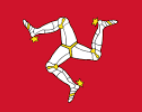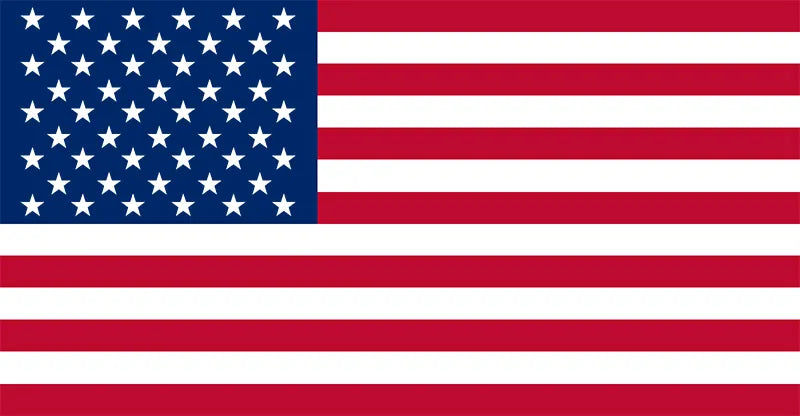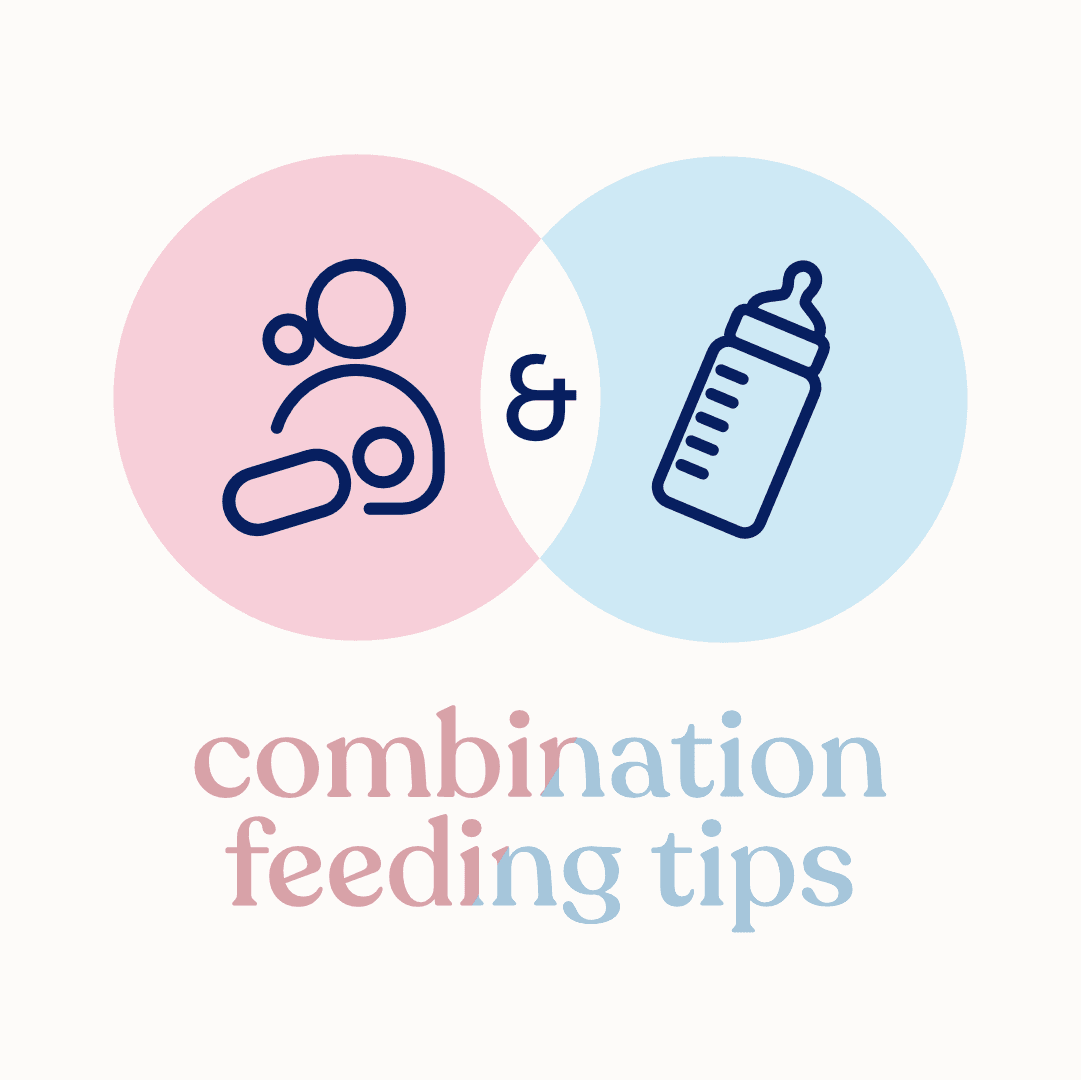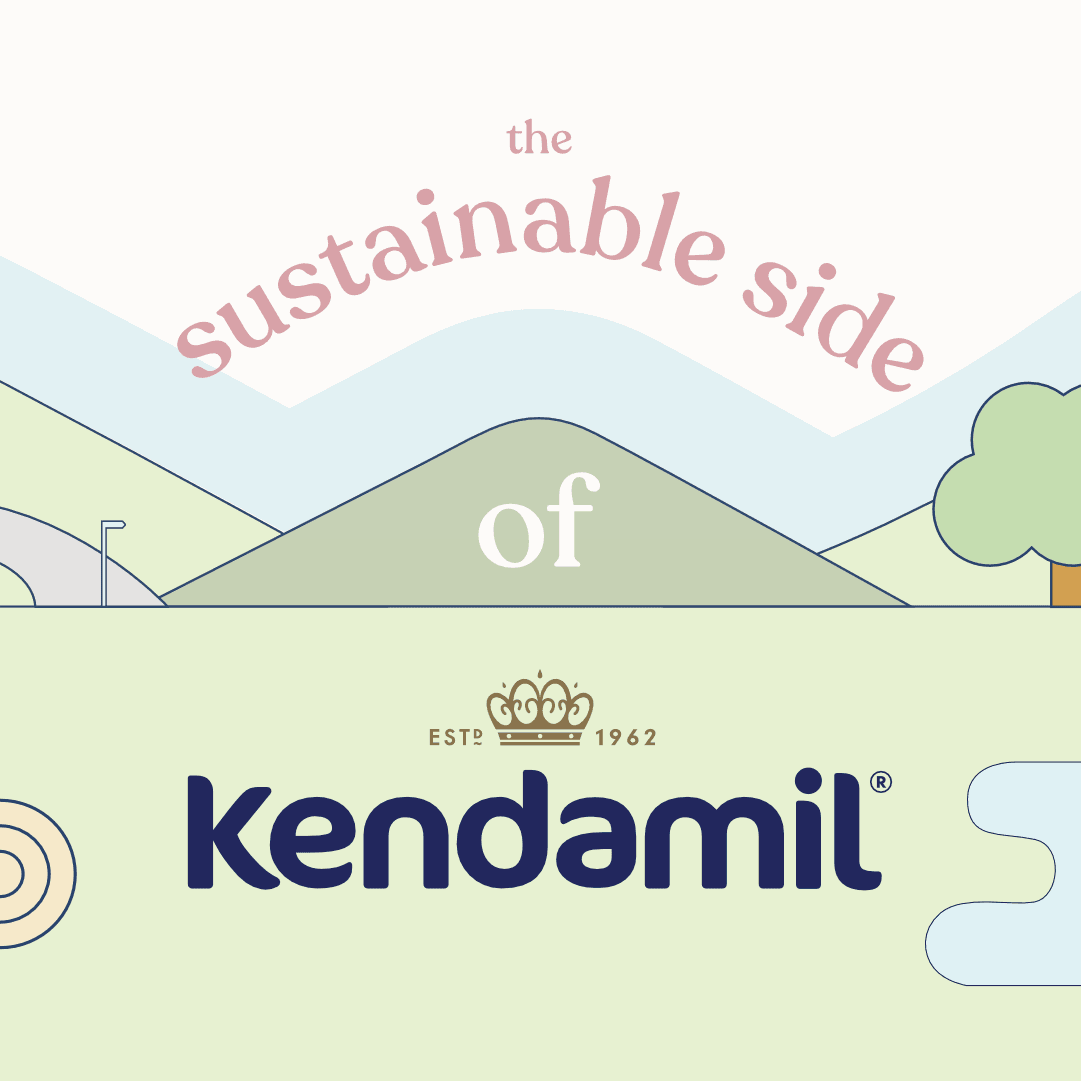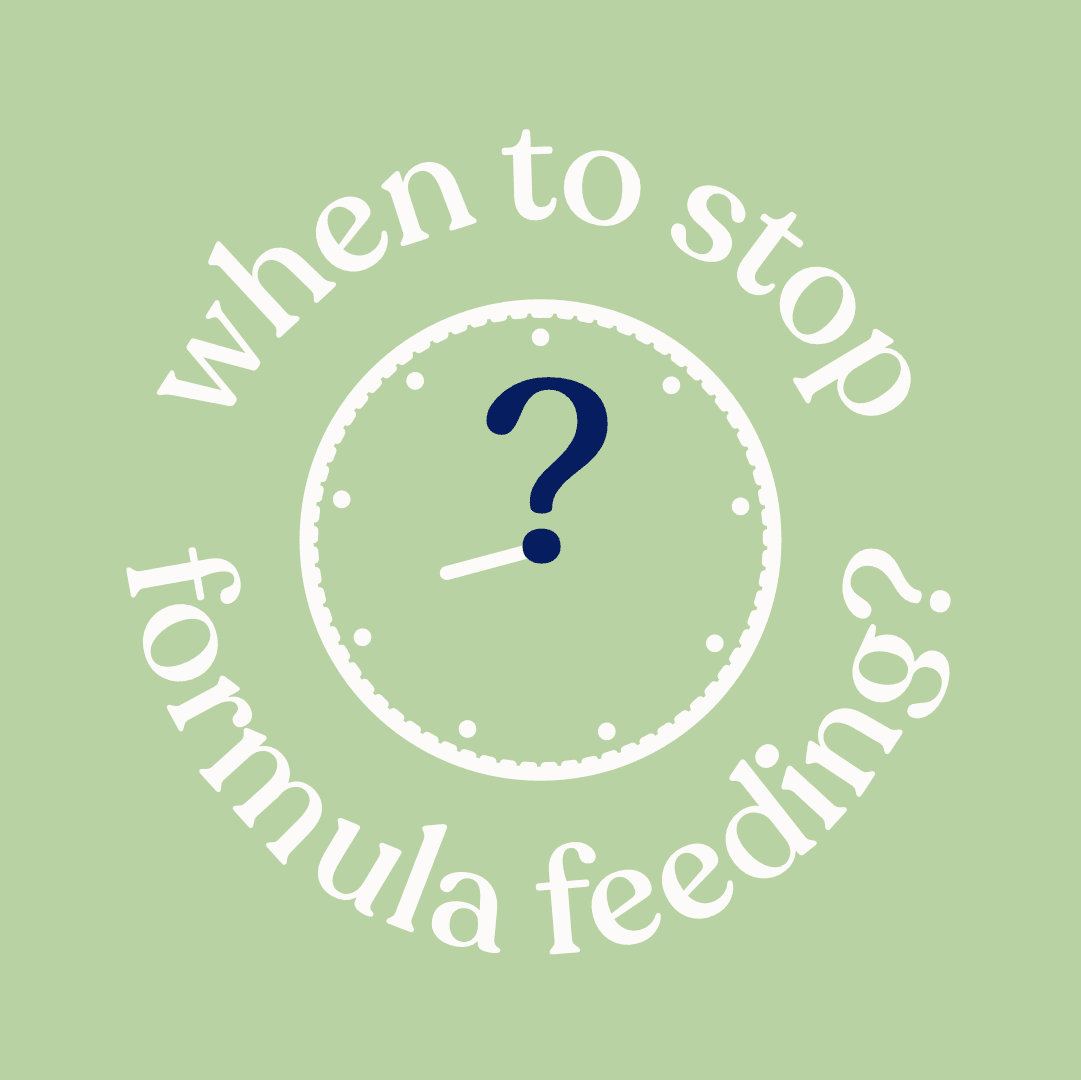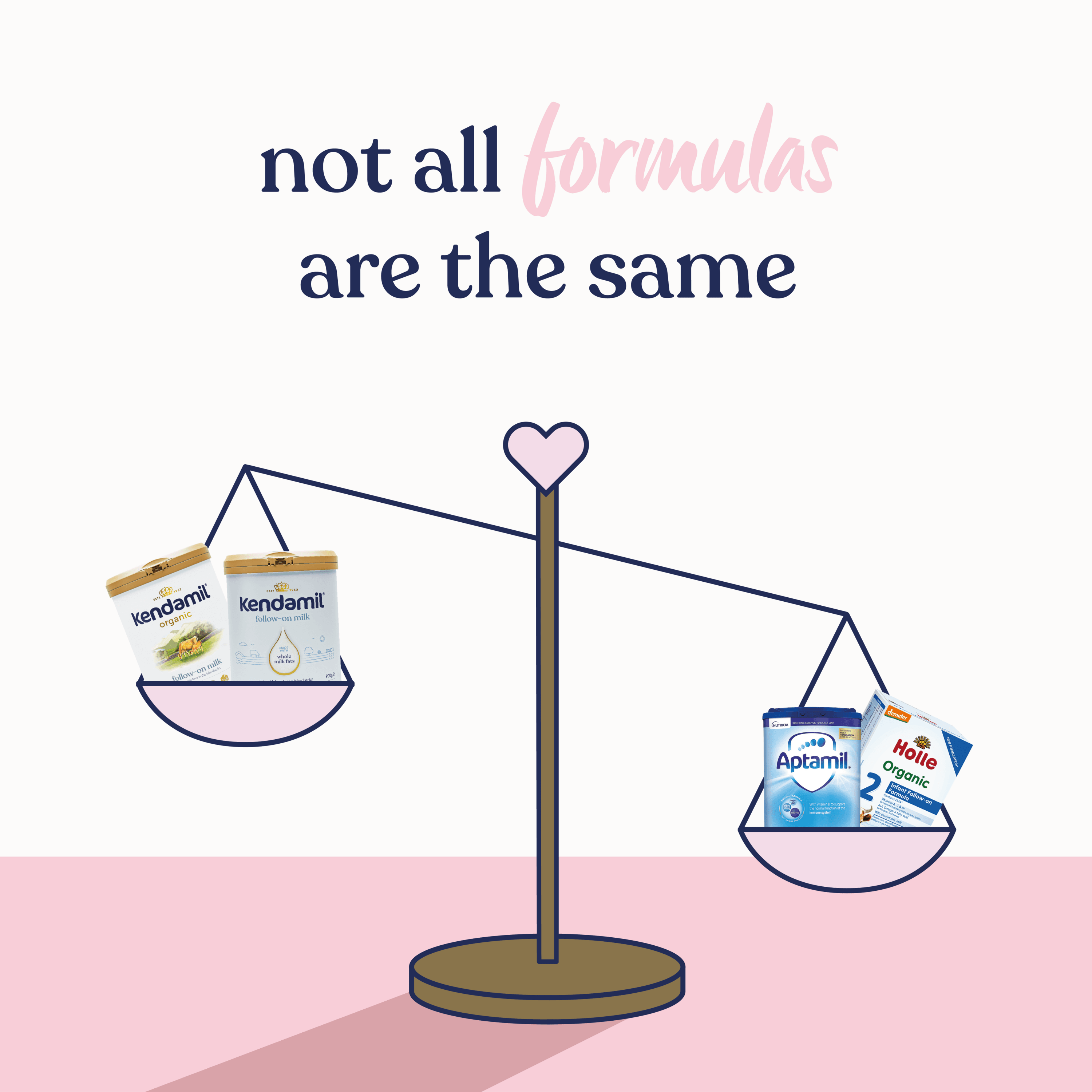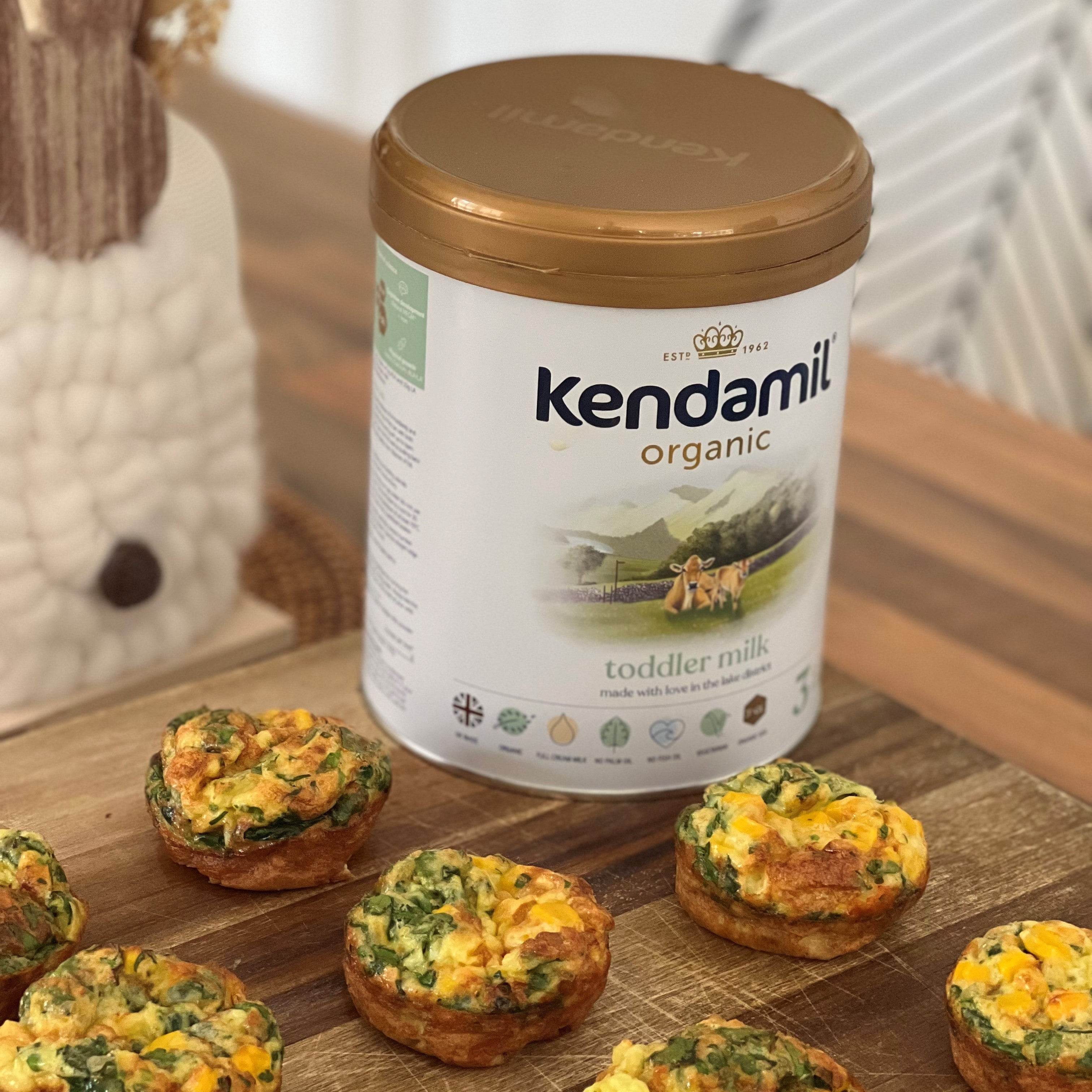You might have heard the term combination feeding before, but perhaps you’re not too sure what it really means.
So, what is combination feeding?
Combination feeding is the process of feeding a baby breast milk and formula milk. There are many reasons why a parent might choose to combination feed, from healthcare reasons or low milk supply to getting Dad and other carers involved or even going back to work.
Combination feeding can be a great option for those families seeking an alternative to exclusively breastfeeding.
We understand that changing your little one’s diet can be a daunting prospect. So, we’re here to help make that transition a little easier.
If you feel that you need extra support to formula feed, be sure to notify your Healthcare Professional. They can offer medical advice and support during this transition.
🥛 Will combination feeding affect milk supply? 🥛
This is by far the biggest concern when it comes to combination feeding and the short answer is yes. It’s so important to understand that in order for combination feeding to be sustainable (and to ensure your supply remains consistent) it’s a commitment.
Breastfeeding works on supply and demand, so if you do start to supplement with formula, this can signal to the mother’s body that she doesn’t need to produce as much milk, especially if mum is looking to replace feeds and doesn't continue to express milk in place of the formula feeding session. It’s key to understand that if you wish to continue with combination feeding, each bottle feed that replaces a breastfeed will need to be expressed to ensure supply stays consistent.
🍼 How to introduce formula feeds if you only express breast milk 🍼
So you’ve decided that combination feeding could be a good option for you need some help to adjust? Follow our tips below to ensure you’re set up for success.
When it comes to deciding on how to introduce a combination of bottle and breast, the top-up method is a great place to start. If you’ve already expressed your breast milk, you could give your baby a bottle of breast milk first, followed by a top-up of formula. Many parents do this and this means you can make sure your baby drinks all of their mother’s breast milk for the day, with the remaining feeds being formula milk.
You might find it easier to mix breast milk and formula milk together in one bottle. Just make sure that the formula is prepared separately and according to the manufacturer’s instructions and HSE guidelines.
Don’t mix breast milk with hot formula milk, as it could compromise the nutrients in the breast milk. Wait until the formula cools to body temperature before mixing.
Lastly, if you know that you’re going to be away from your baby in the next few weeks, try practising combination feeding a few weeks in advance. This can help to ease your baby into their new routine.
🤱🏾 How to introduce formula feeds if you nurse at the breast 🤱🏾
First, remember to be patient with yourself. This process is new, and can take a little time to get right!
If you only nurse at the breast and want to start bottle-feeding with formula, it’s important to give your body time to adjust, and to do this gradually, you may experience clogged ducts, engorged breasts, and mastitis.
It’s natural that if you start to replace feeds with a bottle your breasts will stay full and can become painful if not expressed. We advise expressing any breastmilk you replace with a bottle to relieve any discomfort and prevent clogged ducts as much as possible. Expressing in lieu of a feed will also ensure your supply remains consistent.
It can take as long as 5-7 days for your body to adjust to a missed feed.
🤱🏾 5 top tips to help your baby combination feed 🍼
This new way of feeding is also something your baby will be learning to get used to, as well! Here are some tips we recommend to make the beginning stages a little easier:
● If you’re introducing a bottle for the first time, make sure that your baby is relaxed. If your little one is fussy or hungry at that moment (and used to being nursed at your breast) introducing an alternative way of feeding can be...a struggle.
● You could also try having someone other than you feeding the bottle. If someone else is feeding your baby with a bottle, it could be a good idea for you be completely out of the room. A baby’s sense of smell is pretty strong. Your little one can actually smell your breast milk if you’re nearby.
● Try holding your baby in a different position to how you normally hold them when breastfeeding. This can help accustom your little one to a new style of feeding.
● Try a variety of different teats. Your baby might have a preference for one shape, size or texture of teat over another.
● Get as much skin-to-skin contact as possible. This builds the bond between you and your baby. It’s also been shown to soothe your baby as they feed - which can be immensely useful when you’re implementing such a big change into their little world!
When it comes to stopping feeds it can be tricky to decide which one would be most beneficial.
The choice of whether to stop a feed in the daytime or at night is completely up to you. But it’s important to be consistent to help your body adjust to a new routine.
For example, if you prefer to breastfeed in the mornings, then try and formula feed later in the day. And, because a mum’s body is a miracle, you’ll find that your milk supply will fall in the evenings, as per your schedule!
In other words, your body will literally adjust to any schedule you implement. All you have to do is stick to it.
Amazing, right?
💙 Remember: combination feeding doesn’t mean you can’t bond with your baby 💙
Just because you’re moving to formula doesn’t mean you can’t still bond with your baby. Skin to skin contact, switching up positions and even getting your partner, or other family members, involved in the process can be just as rewarding.
All combination feeding really does is set up a different routine for you and your little one. So, you have more flexibility, with more options with which to nourish your little one.
Our aim is to inform, educate and empower you in your feeding choices. After all, informed is best. So, whether you exclusively breastfeed, formula feed or combine both (in whatever ratio) we’re still here. To make life easier for you, to help you adjust to new routines and, above all, to assist you in nourishing your little one!
Source: https://www2.hse.ie/babies-children/breastfeeding/a-good-start/combination-feeding/
Important Notice: Breastfeeding is best. Kendamil Follow-on milk is only for babies over 6 months, and should be used as part of a mixed diet. Please talk to your Healthcare Professional.

